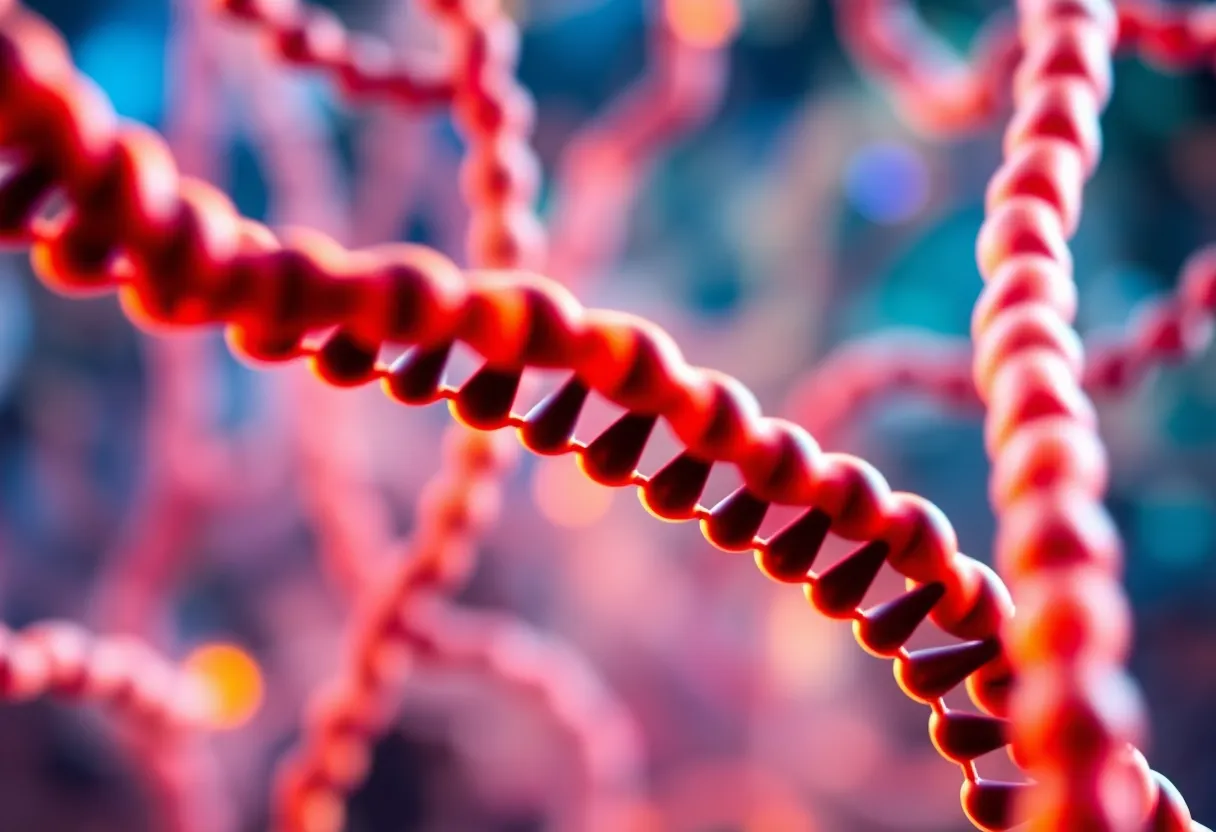News Summary
A groundbreaking study from UNLV has revealed a molecular connection between myotonic dystrophy and autism spectrum disorder (ASD). Researchers found that mutations in the DMPK gene linked to myotonic dystrophy may disrupt gene functions related to autism, potentially informing new diagnostic and therapeutic strategies. The study emphasizes the significance of genetic factors in autism and suggests that existing treatments for myotonic dystrophy could be adapted for autism symptoms, offering hope for families navigating both conditions.
Las Vegas – A groundbreaking study led by researchers at the University of Nevada, Las Vegas (UNLV) has identified a crucial molecular pathway that connects myotonic dystrophy, a genetic muscle disorder, to autism spectrum disorder (ASD). Published on April 21 in the journal Nature Neuroscience, this research could pave the way for new diagnostic and treatment strategies for autism.
The collaborative study was spearheaded by Łukasz Sznajder, a professor of chemistry and biochemistry at UNLV, and involved researchers from the University of Florida, as well as institutions in Poland and Toronto. The team found that mutations in the DMPK gene, which are responsible for myotonic dystrophy, result in mis-splicing of genes associated with autism. This mis-splicing affects the proper function of several autism-related genes, leading to disruptions in both muscle and brain development.
Current estimates indicate that about 95% of children diagnosed with autism also have at least one additional medical condition. This notable overlap between autism and myotonic dystrophy spurred Sznajder’s investigation into the molecular mechanisms that underlie both disorders. The study asserts that while this is one identified pathway leading to autism, it does not encompass all potential origins of the disorder.
Genetics play a significant role in autism, contributing between 60% to 90% of its causes. The findings from this study reinforce the notion that genetic factors are key players in the onset and development of autism. The research team believes that their discoveries could lead to the development of screening protocols for children with myotonic dystrophy to detect autism more effectively and vice versa.
Furthermore, the implications of this study may extend to clinical trials. Researchers are optimistic that existing treatments for myotonic dystrophy could potentially be adapted to help address autism symptoms, offering new hope to families affected by both conditions.
The study’s conclusions challenge narratives suggesting autism is predominantly the result of environmental factors, as posited by some public figures. For instance, Robert F. Kennedy Jr. has publicly stated that factors such as toxins are the primary causes of autism. In response to such claims, the Autism Society of America has criticized these statements as dangerous and misleading. They maintain that autism is a multifactorial condition shaped by both genetic predispositions and environmental influences.
This recent research highlights the need for continued focus on genetic research to better understand autism, particularly given the complexity and diversity of the disorder. Looking ahead, the UNLV research team plans to explore whether similar genetic mechanisms contribute to other forms of autism, potentially expanding the understanding and treatment options available for this widespread condition.
In summary, the UNLV-led study has illuminated significant genetic connections between myotonic dystrophy and autism, providing a fresh perspective on how these complex conditions may be interrelated. As further investigations are conducted, there is hope that improved diagnostics and therapies will emerge, benefiting individuals and families navigating the challenges posed by autism.
Deeper Dive: News & Info About This Topic
HERE Resources
Additional Resources
- Las Vegas Review-Journal: UNLV Study on Autism
- Wikipedia: Autism
- 8 News Now: UNLV Researchers Discoveries on Autism
- Google Search: Autism Research
- News 3 LV: RFK Jr. Autism Claims
- Google Scholar: Autism Genetic Research
- SciTechDaily: Genetic Error in Autism
- Encyclopedia Britannica: Genetic Disorders
- Medical Xpress: Genetic Mechanism of Autism
- Google News: Myotonic Dystrophy
Author: STAFF HERE LAS VEGAS WRITER
The LAS VEGAS STAFF WRITER represents the experienced team at HERELasVegas.com, your go-to source for actionable local news and information in Las Vegas, Clark County, and beyond. Specializing in "news you can use," we cover essential topics like product reviews for personal and business needs, local business directories, politics, real estate trends, neighborhood insights, and state news affecting the area—with deep expertise drawn from years of dedicated reporting and strong community input, including local press releases and business updates. We deliver top reporting on high-value events such as Electric Daisy Carnival, World Series of Poker, and Consumer Electronics Show. Our coverage extends to key organizations like the Las Vegas Chamber of Commerce and Three Square Food Bank, plus leading businesses in hospitality and entertainment that power the local economy such as MGM Resorts International, Caesars Entertainment, and Las Vegas Sands. As part of the broader HERE network, we provide comprehensive, credible insights into Nevada's dynamic landscape.





